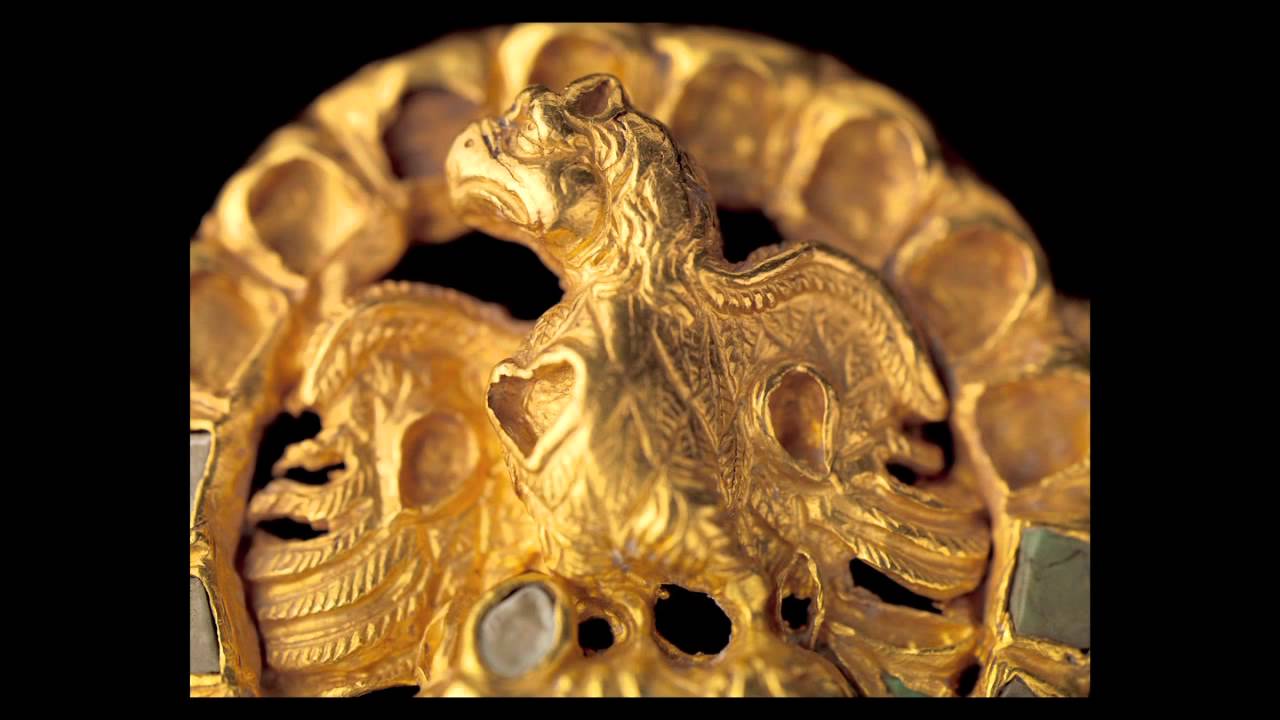Clasp with an eagle and its prey
- Description
Clasp with an eagle and its prey
Gold, turquoise inlay
Parthian (Iran)
ca. A.D. 1st2nd centuryThis solid gold ornament is in the form of a roundel with two projecting elements that have slots for the attachment of a strap. The rim of the roundel, consisting of eighteen thumbnail-shaped cells for turquoise inlay in the manner of some Sarmatian roundels, frames the openwork figure of an eagle in high relief. Grasping a small, crouching animal in its talons, the bird perches in three-quarter view, facing right, with its chest extended and the rest of its body receding into the background. Its wings are outspread, the one on the left seen emerging from behind the swelling of the chest and the one on the right receding into the back plane. The body and legs carry ridges and linear patterning to suggest the texture of feathers. The bird's head is in profile, with a cell for the prominent ear, a protrusion at the eye area, a curved beak, and a downcurved line for the mouth. The entire figure is worked in the round, although the back is distorted and not as carefully finished as the front.
The eagle's prey has been variously identified as an antelope, a goat, and a hare. Turquoise is inlaid in its large ear and in several places on its body. The tabs on either side of the roundel have cells for inlays at the corners in the form of debased acanthus leaves.
This piece is one of a pair; its mate, in the British Museum, London, depicts an eagle facing the opposite way. It was thought by Ernst Herzfeld to be part of a treasure found in 191011 in a chamber tomb near Nihavend in Iran. Herzfeld speculated that this trove had belonged to an aristocratic Parthian family and had originally included a group of Roman gold coins of the first to second century A.D. that surfaced independently in modern times. Another related piece of jewelry, found in excavations at Dalverzin Tepe in Iran, can be dated archaeologically to the first century A.D.
360 deg. rotation: http://82nd-and-fifth.metmuseum.org/clasp-with-an-eagle-and-its-prey-parthian-17.190.2055
- Author
You assume all responsibility and risk for the use of the safety resources available on or through this web page. The International Gem Society LLC does not assume any liability for the materials, information and opinions provided on, or available through, this web page. No advice or information provided by this website shall create any warranty. Reliance on such advice, information or the content of this web page is solely at your own risk, including without limitation any safety guidelines, resources or precautions, or any other information related to safety that may be available on or through this web page. The International Gem Society LLC disclaims any liability for injury, death or damages resulting from the use thereof.
